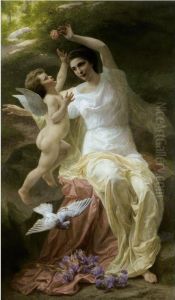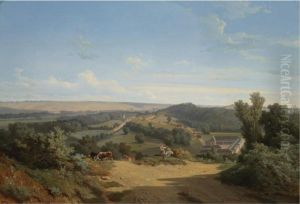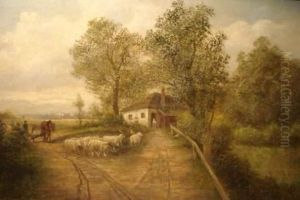Theophile Clement Blanchard Paintings
Théophile Clément Blanchard was a French painter born on June 15, 1844, in Poitiers. He was known for his landscape paintings and his work as an illustrator. Blanchard studied art under the guidance of his father, who was also a painter, Émile Blanchard. He later moved to Paris to further his studies and was influenced by the Barbizon school, a movement that focused on realism in landscape painting and depicted rural France with a sense of emotion and naturalism.
Théophile Blanchard's work often featured the French countryside, where he captured the changing seasons and times of day with a delicate sensitivity to light and atmosphere. His paintings were marked by their serene and harmonious qualities, using a palette that was both vibrant and subtle. Blanchard exhibited his works at the Paris Salon, an official art exhibition of the Académie des Beaux-Arts in Paris, and received favorable reviews from critics and the public alike.
Throughout his career, Blanchard also produced illustrations for books and magazines, showcasing his versatility as an artist. Despite his success, he remained relatively modest and dedicated to his craft, avoiding the limelight and focusing on his work.
Blanchard's contribution to French landscape painting is recognized as part of the broader movement of artists in the late 19th century who sought to capture the essence of the natural world. His paintings are appreciated for their poetic interpretation of rural scenes and their ability to evoke a sense of tranquility.
Théophile Clément Blanchard passed away on October 24, 1910, in Chatou, a suburb of Paris. His works continue to be admired for their beauty and craftsmanship, and they can be found in various art collections and museums across France and beyond. Blanchard's legacy is that of a painter who was deeply connected to the landscape and who was able to convey the spirit of the French countryside through his art.


